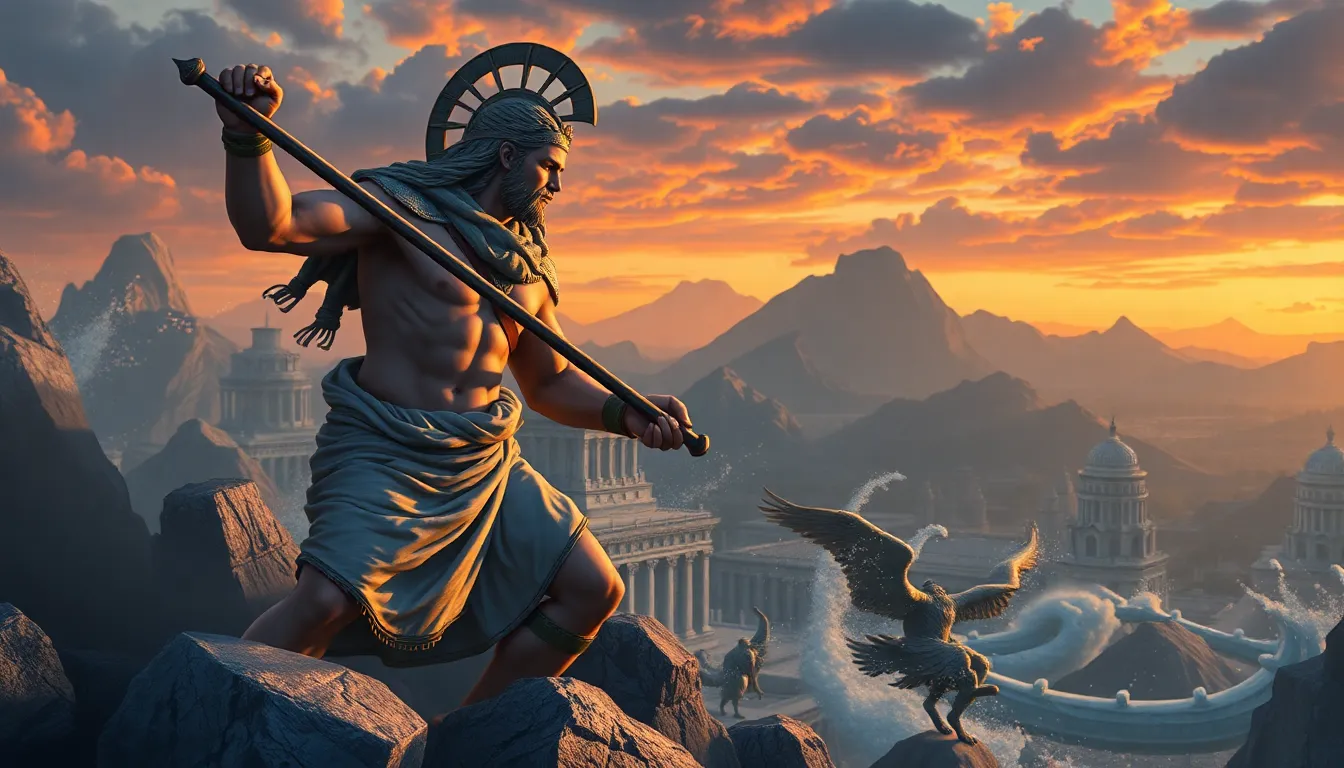The Twelve Labors of Heracles: Lessons in Courage and Redemption
I. Introduction
Heracles, known for his immense strength and heroic feats, stands as one of the most significant figures in Greek mythology. His tales encapsulate themes of struggle, courage, and redemption, making him a timeless symbol of the human spirit. The Twelve Labors of Heracles, a series of tasks imposed upon him as penance, serve not only as a narrative of his adventures but also as a profound exploration of personal growth and resilience.
II. The Mythological Context of Heracles
Heracles, or Hercules in Roman mythology, was born as the son of Zeus and Alcmene, a mortal woman. His divine parentage set the stage for his extraordinary life, yet it also invited the wrath of Hera, Zeus’s wife. Jealous of Heracles’ existence, Hera placed a curse upon him, leading to moments of insanity that would result in the tragic death of his wife and children. This moment of despair ignited Heracles’ quest for redemption, ultimately leading him to undertake the Twelve Labors.
III. The Nature of the Twelve Labors
The Twelve Labors of Heracles are as follows:
- The Nemean Lion: Heracles had to slay the invulnerable lion and return with its skin.
- The Lernaean Hydra: He faced the multi-headed serpent, where cutting off one head would lead to two more growing in its place.
- The Ceryneian Hind: A sacred deer belonging to Artemis that Heracles had to capture without harming it.
- The Erymanthian Boar: He was tasked with capturing this giant boar alive.
- The Augean Stables: Heracles cleaned the stables of King Augeas in a single day, diverting rivers to do so.
- The Stymphalian Birds: He had to drive away these man-eating birds with the help of Athena.
- The Cretan Bull: Heracles captured the magnificent bull that had ravaged Crete.
- The Mares of Diomedes: He fed the man-eating horses their master, Diomedes, to tame them.
- The Girdle of Hippolyta: Heracles was sent to retrieve the belt of the Amazon queen.
- The Cattle of Geryon: He traveled to the end of the world to fetch the cattle guarded by the three-bodied giant, Geryon.
- The Apples of the Hesperides: Heracles had to steal the golden apples from the garden guarded by a dragon.
- The Capture of Cerberus: Finally, he was to retrieve Cerberus, the three-headed dog, from the underworld.
Each labor presented unique challenges, symbolizing different facets of Heracles’ character development. They were not merely physical tasks but also tests of mental strength, strategy, and moral fortitude.
IV. Courage in the Face of Adversity
The Twelve Labors serve as a testament to Heracles’ bravery. Each task forced him to confront not only monstrous adversaries but also his own fears and doubts. For instance:
- In the face of the Nemean Lion, Heracles had to overcome the terror of fighting a creature that could not be wounded by conventional weapons.
- Against the Hydra, he had to devise a strategy to defeat a foe that multiplied with each victory.
- When capturing the Ceryneian Hind, he displayed patience and respect for nature, showcasing courage in restraint.
These examples illustrate how Heracles grew through his trials, learning to face his fears head-on and emerging stronger each time.
V. Themes of Redemption and Personal Growth
Heracles’ journey through the Twelve Labors is deeply intertwined with themes of redemption. Each labor not only served as a punishment but also as a means for Heracles to atone for his past actions, particularly the tragic consequences of Hera’s curse. His transformation from a man plagued by guilt and shame to a celebrated hero exemplifies the potential for personal growth. The labors can be seen as a pathway to reclaiming his honor and identity, ultimately reinforcing the idea that redemption is achievable through perseverance and courage.
VI. The Role of Companionship and Guidance
Throughout his labors, Heracles was not alone. Several key figures provided companionship and guidance, highlighting the importance of support in achieving personal goals. Notable among them were:
- Athena: The goddess of wisdom who often guided Heracles with strategic advice.
- Iolaus: Heracles’ nephew and companion, who assisted him in several labors, particularly in defeating the Hydra.
- Theseus: A fellow hero who shared in some of Heracles’ adventures, emphasizing the value of friendship in overcoming challenges.
Their presence not only provided physical assistance but also emotional support, illustrating that even heroes need help on their journeys.
VII. Modern Interpretations and Relevance
The Twelve Labors of Heracles have transcended their mythological origins, resonating deeply in contemporary culture. They are often referenced in literature, film, and art as symbols of human struggle and resilience. The lessons learned from Heracles can be applied to modern life challenges, including:
- Facing our fears and overcoming obstacles.
- The importance of perseverance in the face of adversity.
- Understanding that personal growth often comes through trials and tribulations.
Heracles’ story encourages individuals to embrace their challenges as opportunities for growth and redemption.
VIII. Conclusion
The Twelve Labors of Heracles are more than just tales of physical prowess; they embody profound lessons in courage and redemption. Heracles’ journey from a troubled hero to a figure of strength and honor serves as a timeless reminder of the human capacity for growth, resilience, and the pursuit of redemption. His legacy continues to inspire individuals to confront their fears and strive for personal development, solidifying Heracles’ place in both mythology and the human experience.




